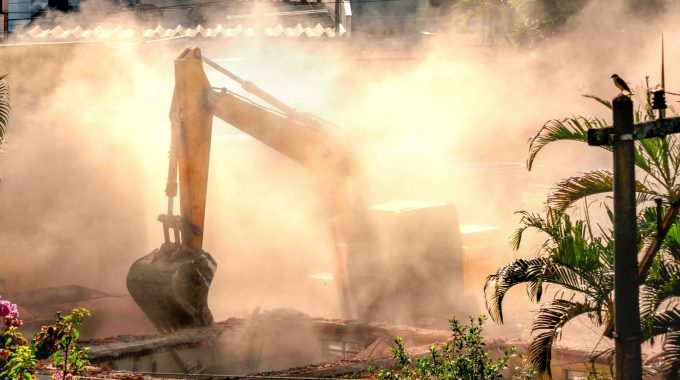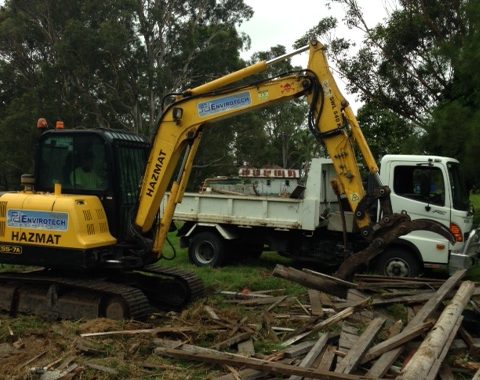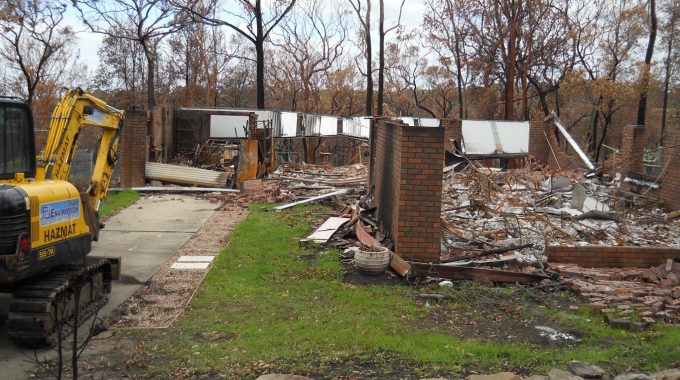What is the Process of Building Demolition?
There is a lot more involved in dismantling a building than simply knocking it down. From creating a demolition plan to choosing the right demolition method, the deconstruction process requires specialised knowledge to ensure this high-risk activity is performed cost effectively and in line with best practice safety measures whilst adhering to government regulations.
With many years of experience in building demolition, P&D Envirotech has created this step-by-step guide to help homeowners and commercial property owners understand the demolition process, stick to their construction budget and keep the project on track.
Step 1: Strategic Planning and Preparation
Demolition is a controlled process that involves a lot of preparation and planning. A building may need to be demolished if it is no longer structurally sound and threatening to collapse or pose a hazard, if it no longer serves its purpose, or if the clearance of the land is required for sale or new construction.
The first step in the demolition process involves a thorough site inspection to assess the location of the structure and nearby structures, the materials used and the location of utilities. Engineering reports will also need to be obtained on the structural integrity of the building and any potential threats assessed.
Step 2: Securing Permits and Addressing Hazards
A local council permit is required before any demolition work can take place which can sometimes take several weeks to be approved. You’ll be required to provide documents including the title, site plan and the contract with your demolition team.
During this time your demolition contractor will consider the building’s previous uses and how to remove any chemicals, hazardous substances or flammable materials if necessary. In NSW, you are legally obligated to state if asbestos is present on site and have it removed following SafeWork standards before demolition work begins. As P&D Envirotech are experts in the hazardous materials field, we can also take care of this process so that a Complying Development Certificate can be issued if you intend to develop the site.
Services such as gas and telecommunications also need to be disconnected, and water and sewerage capped. At this point, relevant stakeholders are notified and management plans for noise, dust and debris are created to keep the community safe during demolition.
Step 3: Preparing the Plan
A comprehensive plan of how the demolition will be conducted is now created. It will set out things like the right demolition methods for different parts of the building, the machinery and equipment requirements and in which order the demolition process will take place. In most demolitions, excavators are the safest method for dismantling buildings because they allow for precision whilst work is conducted from a safe distance.
The demolition plan will also include details such as the location of the structure and the distance between it and other buildings or homes, any existing structural supports and a demolition timeline.
Step 4: Putting Safety Measures in Place
The demolition control plan will also contain processes that are to be followed to ensure the health and safety of everyone involved in the demolition process. P&D Envirotech completes detailed safe work method statements for each job to account for the unique circumstances of each demolition.
Other safety measures such as the erection of temporary fencing and a Traffic Management Plan, where applicable, are also created to ensure the safety of the public.
Step 5: Ensuring Safety During the Demolition Process
Aside from selecting the correct demolition techniques for the job, demolition contractors are obliged to ensure safety is upheld throughout the demolition process with the correct risk assessment strategies to manage hazards and by performing regular inspections to maintain compliance.
P&D Envirotech’s team of professionals are trained on the best safety practices to create a safe and secure working environment. This means our clients can have peace of mind that their demolition projects are conducted in the safest possible manner.
Step 6: Managing Waste and Sustainability
A Waste Management Plan that sets out how debris and rubble are to be removed from the site (including hazardous materials such as asbestos) will be set out during the planning phase. It will cover how waste is managed and its disposal before, during, and following demolition.
P&D Envirotech’s waste management plans are always developed in accordance with the NSW Waste Avoidance and Resource Recovery Act. This legislation aims to encourage the most efficient use of resources by recycling where possible and taking steps to reduce harm to the environment. This means that any materials that can be reused, such as concrete, are recycled.
The Environmental Management Plan will also detail ways to minimise any environmental effects that result from the demolition process.
Step 7: Site Cleanup and Preparing for Development
Following post-demolition waste removal, P&D Envirotech can arrange soil testing and site restoration to ensure the site complies with any future development requirements and is safe for occupation.
The Importance of Professional Demolition Services
NSW has strict standards to ensure the demolition of any building is done safely. It’s crucial to employ a demolition contractor with a thorough understanding of these regulations and that will ensure a high quality of deconstruction work.
P&D Envirotech specialises in dealing with hazardous substances and materials, many of which are commonly found in older buildings. This means we are well positioned to deal with all aspects of your Wollongong demolition project, from the planning stage through to site clean-up and decontamination.
Contact us today on 1300 884 113 to arrange a quote or find out more about how we can assist you.






